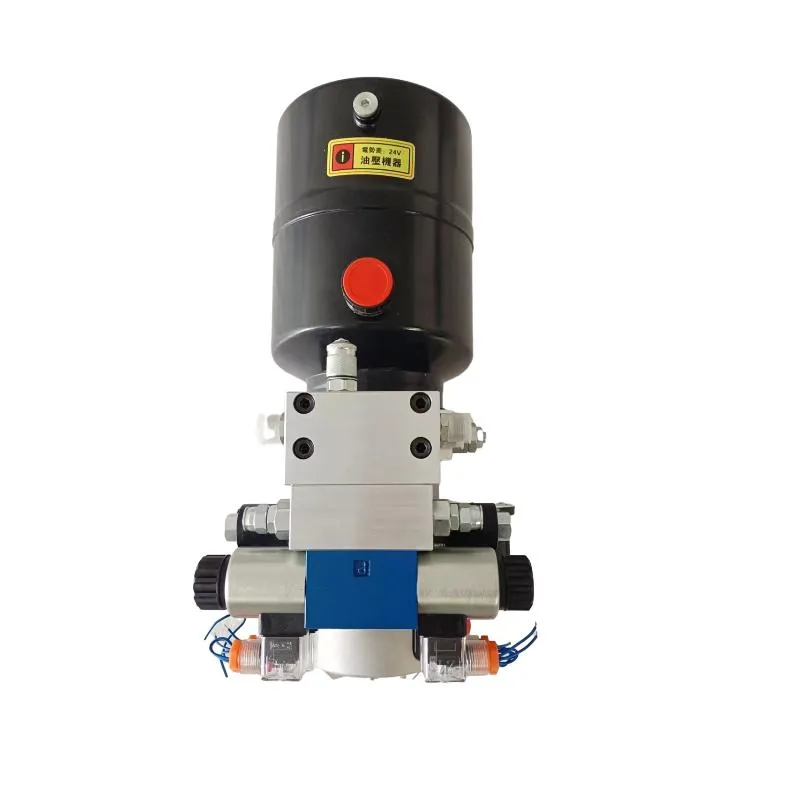Nov . 17, 2024 16:35 Back to list
china hydraulic cylinder manufactures
The Landscape of Hydraulic Cylinder Manufacturing in China
Hydraulic cylinders are indispensable components in various industrial applications, ranging from construction machinery and agricultural equipment to automotive manufacturing and aerospace engineering. In recent years, China has emerged as a global leader in hydraulic cylinder manufacturing, driven by rapid industrialization, advanced technology, and a growing domestic and international market demand.
Overview of the Hydraulic Cylinder Industry in China
China's hydraulic cylinder industry has seen exponential growth, largely due to the country's vast industrial base and the increasing need for automation. The nation produces a wide array of hydraulic cylinders, including double-acting, single-acting, and telescopic types, catering to versatile applications. With an innate focus on research and development, Chinese manufacturers have been able to innovate and improve the efficiency, durability, and performance of their products.
China's hydraulic cylinder market is characterized by a mosaic of manufacturers ranging from large-scale enterprises to SMEs (Small and Medium Enterprises). Some prominent manufacturers such as Zhangjiagang Huao Machinery Co., Ltd. and Jiangsu TAIKAI Hydraulic Co., Ltd. have established a strong reputation by adhering to international standards and investing in quality assurance processes. This diversity in manufacturing capability allows the industry to cater to specific needs and customize solutions according to client requirements.
Factors Contributing to Growth
1. Technological Advancements Chinese manufacturers have increasingly adopted advanced technologies, such as computer-aided design (CAD) and automation in production processes. This has not only improved the precision of hydraulic cylinders but also enhanced productivity and reduced lead times. The integration of IoT (Internet of Things) in manufacturing processes allows for real-time monitoring and maintenance, ensuring higher efficiency.
2. Robust Supply Chain China has developed a comprehensive supply chain that supports the hydraulic cylinder industry. The availability of raw materials, such as high-strength steel and seals, combined with skilled labor and efficient logistics, allows manufacturers to optimize their production processes and reduce costs.
3. Export Opportunities The growing global demand for hydraulic machinery and equipment has opened lucrative export opportunities for Chinese manufacturers. With competitive pricing and a reputation for reliability, Chinese hydraulic cylinders are finding markets in Europe, North America, and Southeast Asia.
china hydraulic cylinder manufactures

4. Government Support The Chinese government has implemented several initiatives to boost the manufacturing sector. Policies aimed at promoting innovation, supporting research and development, and providing financial incentives have played a vital role in the growth of the hydraulic cylinder industry.
Challenges Faced By Manufacturers
Despite the positive growth trajectory, the hydraulic cylinder manufacturing sector in China faces several challenges. Competition is fierce, not only from domestic players but also from international manufacturers who are increasingly setting up operations in China. Furthermore, the need for continuous innovation means that companies must invest heavily in R&D to keep pace with technological advancements.
Moreover, issues related to environmental regulations are becoming more stringent. Manufacturers need to adopt sustainable practices and invest in greener technologies to meet both domestic and international standards. The rising cost of raw materials and labor is another challenge that manufacturers must navigate to maintain profitability.
Future Trends
The future of hydraulic cylinder manufacturing in China appears promising. Industry experts predict that the sector will continue to grow, fueled by advancements in digital manufacturing and increasing demand for energy-efficient hydraulic solutions. The continued shift towards automation and Industry 4.0 will likely drive innovation in hydraulic cylinder designs, focusing on improving efficiency and reducing wastage.
Additionally, with an emphasis on sustainability, manufacturers may explore alternative materials and eco-friendly production methods. The integration of smart technology in hydraulic systems is also anticipated to revolutionize the industry, enabling better performance monitoring and predictive maintenance.
Conclusion
In conclusion, China's hydraulic cylinder manufacturing industry is on a robust growth path driven by technological innovation, a strong supply chain, and favorable government policies. While the sector faces challenges such as intense competition and regulatory pressures, the future looks bright with continued advancements and a growing commitment to sustainable practices. As the industry evolves, Chinese manufacturers are well-positioned to meet both domestic and international market demands, solidifying their role as global leaders in hydraulic cylinder production.
-
Fork Lift Power Units - Hebei Shenghan | Efficiency, Reliability
NewsJul.13,2025
-
1.5-Ton Turbocharged Cylinder-Hebei Shenghan|Hydraulic Solution,Energy Efficiency
NewsJul.13,2025
-
Auto Hoist Power Units-Hebei Shenghan|Efficiency&Industrial Lifting
NewsJul.13,2025
-
Double Acting Power Units-Hebei Shenghan|Hydraulic Solutions,Industrial Efficiency
NewsJul.13,2025
-
1.5 Ton Lifting Cylinder 70/82-40-290-535 - High-Performance Hydraulic Solution | Hebei Shenghan
NewsJul.13,2025
-
Fork Lift Power Units - Hebei Shenghan | Efficiency&Reliability
NewsJul.13,2025
